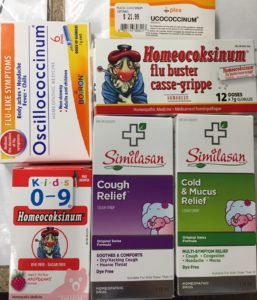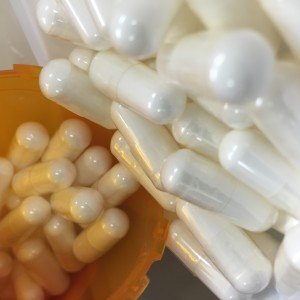Omega 3 supplements have been taking a beating lately with regard to cardiovascular outcomes. One thing that we have seen is the questionable cause and effect of the wide variety of commercially available Omega 3 supplements available on the market and the dose required for any effect at all.
Clinically, one indication I see Omega 3 supplements used for successfully is pain relief. It works along the same pathway as anti-inflammatory medications. But what does the evidence tell us about the effectiveness of such supplementation in an era where vitamins, herbs and supplements are more and more becoming a punching bag for quackery? Is there hard evidence for treating pain without the use of (oral) NSAIDS, opioids, muscle relaxers, antidepressants, counterirritant rubs, and anticonvulsants? Transdermal pain compounding comes to mind, but is there an OTC product you can start today in giving your customers to begin safely reducing their pain?
First of all you need to set expectations. If you are someone in chronic daily pain, you need to be upfront with them as a pharmacist by telling them that 100% pain relief is not a concept that we entertain. Your discussion with goal setting with them should inquire what they want to get out of this. Most patients in chronic pain don’t necessarily need to be pain free, they have learned for years how to live and cope with pain. What they may share with you is the desire to play with their grandkids, to go to church with their spouse, to go for a walk with their dog every day, or to just simply get out of bed and make a meal for themselves.
There have been a number of pain patients I can recall who have claimed that by taking this one supplement, they are able to do some of these activities. As evidence-based healthcare practitioners, we must strike a balance between following anecdotal evidence we’re presented with in the pharmacy and using the invaluable clinical evidence we see as healthcare professionals that really no one else sees. This balancing act inevitably involves stumbles where we fall for an N of 1 to strongly and apply it to everyone we speak to. In other moments of clarity, we look back at the results of our recommendations and accumulate a non-trial-based clinical judgment that we feel strong enough about to make recommendations for in the front store.
Recommendations to use Omega 3 supplementation in relieving pain are based on good quality evidence. When we look at the use of Omega 3 with rheumatoid arthritis (RA) specifically, it is important to reinforce with patients (and to ourselves as pharmacists) that this is not meant to replace what we use conventionally. Disease modifying antirheumatic drugs (DMARDS)should not be dropped in favor of Omega 3 supplementations. In fact DMARDS can help induce the remission of the disease when used early. They can, however, be used in conjunction with them.
Being a disease connected with the immune system, rheumatoid arthritis treatments that work with the body’s immune system are an attractive way to combat the problem. Omega 3 has been shown to affect our immune system. Arachidonic acid, which is an omega 6 product, flows into pathways that create inflammatory molecules which are involved in rheumatoid arthritis, including inside immune cells. The EPA and DHA in marine Omega 3 supplements reduces arachidonic acid. They follow a pathway which results in anti-inflammatory products and affects dentritic cell and T cell function. Additionally, it reduces reactive oxygen species by leukocytes and inflammatory cytokine production by macrophages. But the work on this area and how it pertains directly to RA is less understood. (1)
In a systemic review of 23 studies of Omega 3 use, modest but fairly consistent benefits were seen in relation to joint swelling, pain, the duration of morning stiffness, and the global assessments of pain and disease activity.(1) There was also a benefit in the amount of NSAID therapy used in these patients.
In explaining just how omega 3 has a cause and effect relationship with RA and how studies show that it helps to reduce pain, we look to the similarity in effect between NSAIDS and Omega 3 in the body. Prostaglandin E2 (PGE2) is involved in all processes leading to the classic signs of inflammation (redness, heat, swelling, pain and edema). (2) A typical NSAID blocks the production of Eicosanoids including several prostaglandins as well as thromboxane proinflammatory products involved in pain and inflammation. Omega 3 reduces the production of mainly PGE2. Therefore you get the benefit of reduced pain and inflammation while avoiding the other problems with NSAIDS on the stomach. Unfortunately, the blood thinning still occurs, so those at risk for bleeding or on blood thinners need to be mindful of this. In reducing the dose of Omega 3 to avoid this, patients may put themselves in a dose range that is ineffective for RA. As you may have guessed, Omega 6 supplements increase arachidonic acid which is responsible for the production of these pro-inflammatory products, so combination 3-6 or 3-6-9 products are not recommended.
Based on current data, doses above 2.7g per day of combined Omega 3 ingredients in the fish oil are required for this response, which may be delayed for two to three months before results are fully realized.(3)
A systematic review that looked at the effect of marine fish oil on the pain of arthritic disease determined that it did in fact reduce pain in that population (4). An excellent source for references comes from the Australian NPS MedicineWise from April of this year. Over all it lays out a number of encouraging studies that can put another tool in the pharmacist’s toolbox for helping your RA patient.
Looking back to our “front store experience N of 1 world,” Omega 3 supplementation and joint pain relief always remind me of my 101-year-old customer who reminds me that she wouldn’t be moving at all without this supplement.
Graham MacKenzie is a compounding pharmacist in Baddeck, N.S., and a graduate of Dalhousie College of Pharmacy.
References
- Miles EA, et al. Influence of marine n-3 polyunsaturated fatty acids on immune function and a systemic review of their effects on clinical outcomes in rheumatoid arthritis. Br J Nutr. 2012 Jun;107 Supp; 2:171-84
- Emanuela Ricciotti Et. al . Prostaglandins and Inflammation. Arterioscler Thromb Vasc Biol .2001 May; 31(5):986-1000
- Rees D, et al Dose-related effects of eicosapentaenoic acid on innate immune function in healthy humans: a comparison of young and older men. Am J Cin Nutr. 2006 Feb;83(2):331-42
- Senftleber NK et al Marine Oil Supplements for Arthritis Pain: A systematic Review and Meta_Analysis of Randomized Trials. Nutrients 2017.


